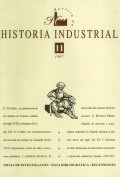Las transformaciones del mercado de trabajo en Cataluña (1850-1925): migraciones, ciclos de vida y economías familiares
Resumen
The article emphasises the rationality in which families of historical populations made use of all their human resources. It is argued that working class families optimised collective utility as a means of maximizing individual ones. This is to say, the conventional approach based on independent utility functions does not square well with the results obtained.
On the other hand, as a result of the long contracts born with the second industrial revolution, by 1920 women would attain increasing wages during part of the life cycle for the first time in the history. This fact and compulsory schooling of children led to a change of the composition in the family labour supply: instead of children, married women began to work outside the household.
Despite the fact that the same occupation was always less rewarded for women than for men, the classical scheme based on the secondary and the primary sectors of the labour market does not fjt in our evidence, as job ladders also applied now to the working life’s of working women.
The second industrial revolution also implied that the model of unlimited supply of labour is not in line with the Spanish experience of the first third of the XXth century. The new skill requirements and the consolidation of the interna1 labour markets implied that labour recruitment was confined to industrial areas where vocational training guaranteed a certain skill level of the population. Only during the «economic miracles» of the late Francoist period we can apply the model of a dual economy.
Descargas
Descargas
Publicado
Cómo citar
Número
Sección
Licencia
El/la autor/a cede los derechos al/la editor/a. Creative Commons
El/la autor/a que publica en esta revista está de acuerdo con los términos siguientes:
- El/la autor/a cede en exclusiva todos los derechos de propiedad intelectual al/la editor/a para todo el mundo y toda la duración de los derechos de propiedad intelectual vigentes aplicables.
- El/la editor/a difundirá los textos con la licencia de reconocimiento de Creative Commons que permite compartir la obra con terceros, siempre que éstos reconozcan su autoría, su publicación inicial en esta revista y las condiciones de la licencia.





